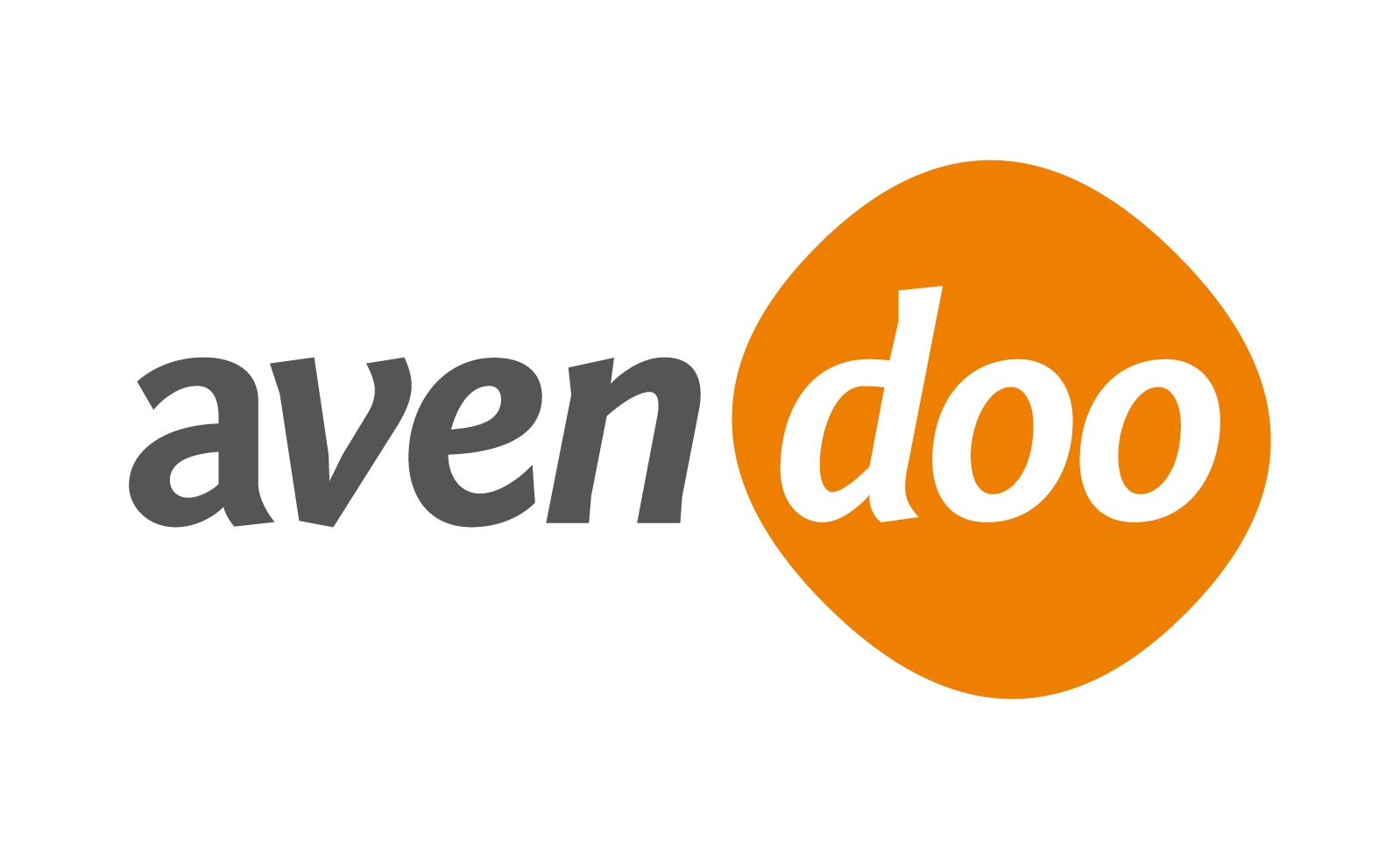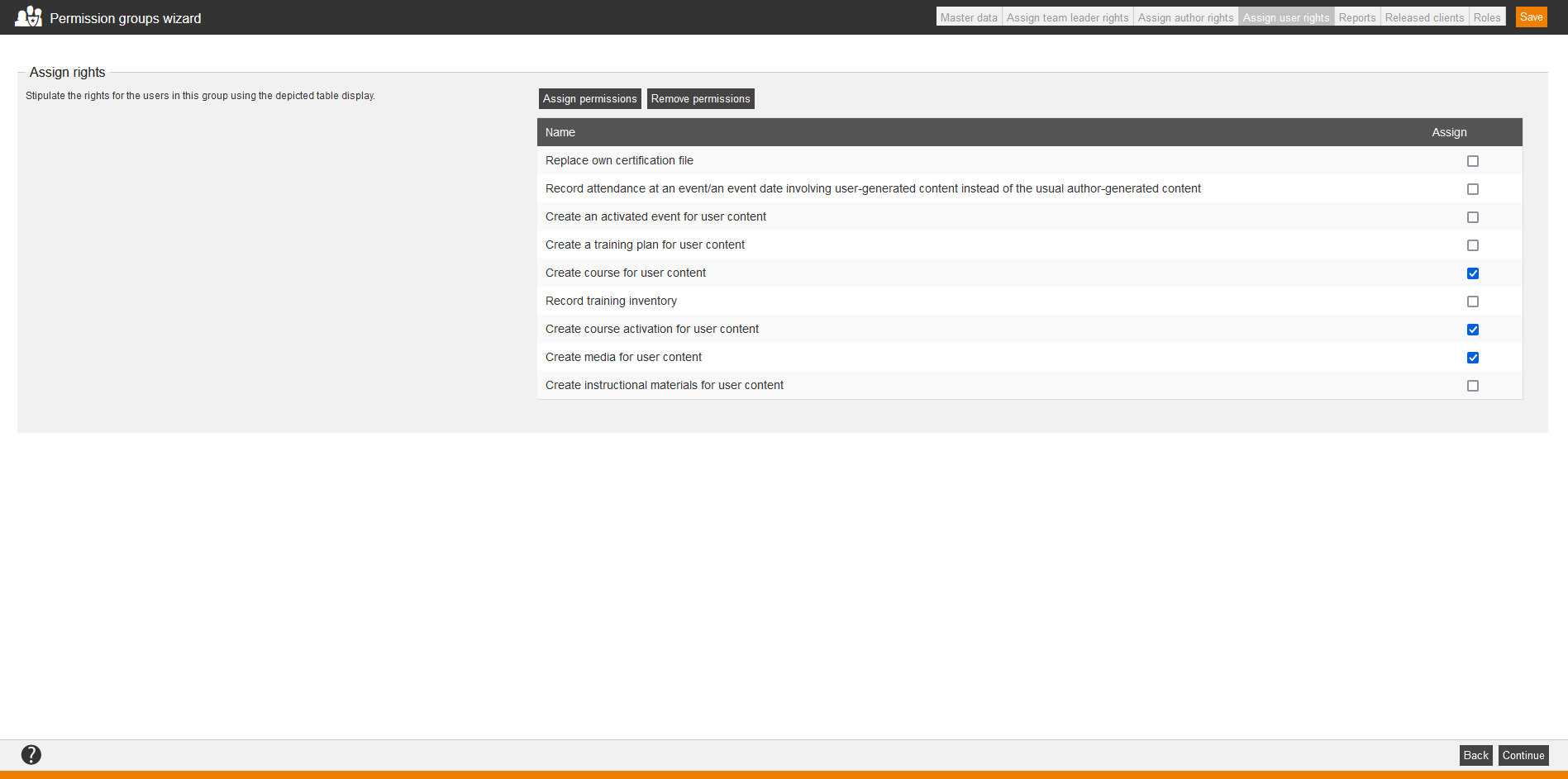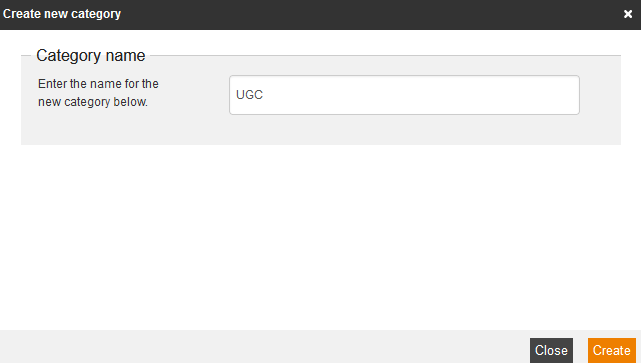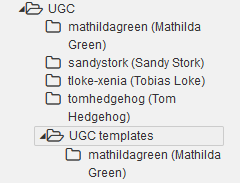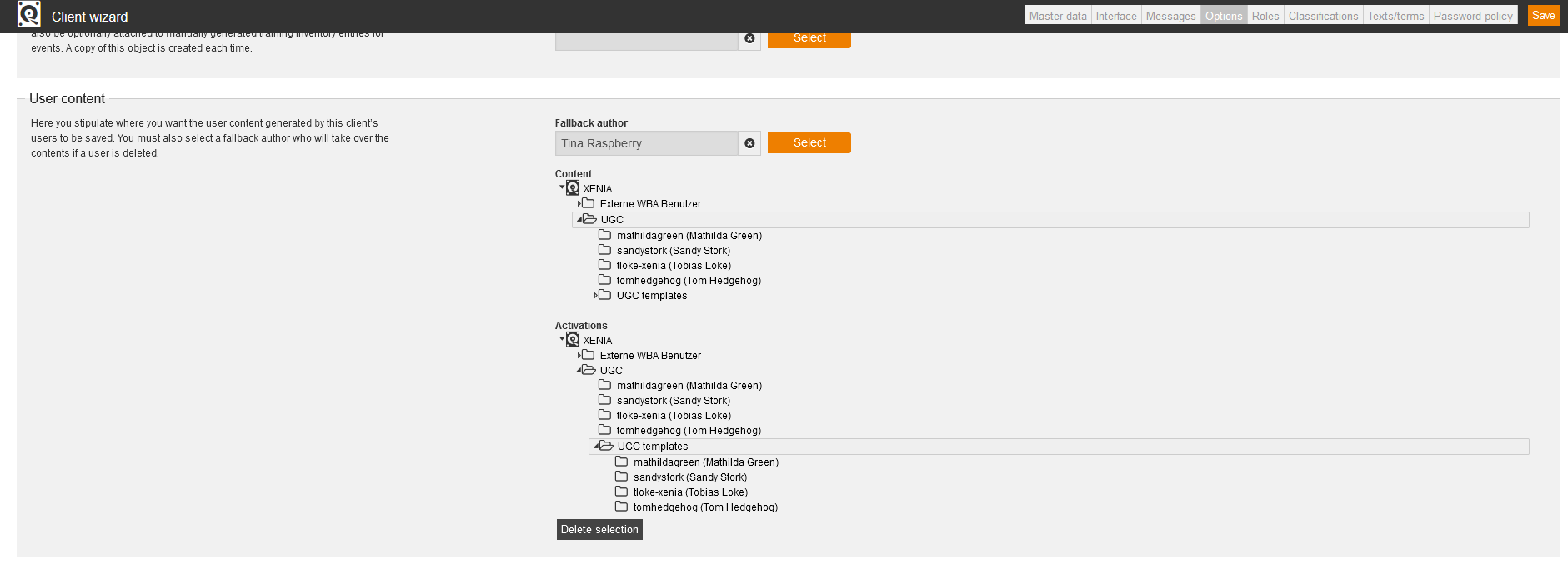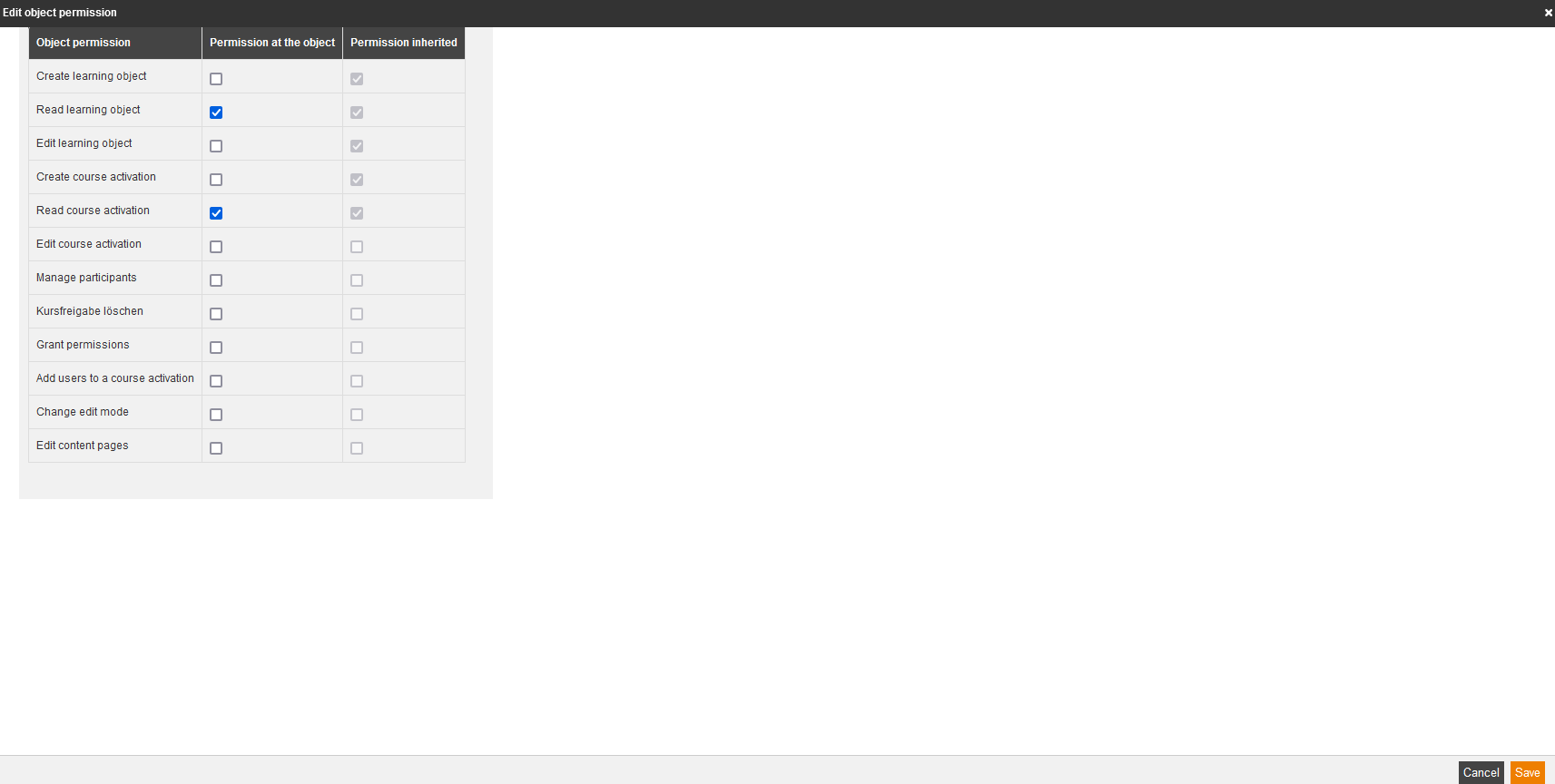The following four settings are required that the user and/or user-team leader create and combine own learning units on the tab My content on the learning place:
User rights for UGC
You assign the user rights Create course for user content, Create course activation for user content and Create media for user content to the user or/and the user-team leader. Further information you find under Permission groups or under User rights.
You see the mandatory settings in the Permission group wizard on the screenshot.
Storage categories for UGC
We recommend very strongly to create an own category for UGC and a sub category for UGC templates in the Content and Activation client because for each user or user-team leader should be created a sub category in the category UGC in Avendoo® (see third screenshot). By the selection of two categories for the storage in the Content client the content (courses, events and event dates) is stored in the first storage category and the course activations are stored in the second storage category. You got an excellent overview about your UGC content by using this storage structure.
To create these categories you go into the overview of the course activations for example and click in the category tree on the category which should be above. Then you choose in the context menu Create new category (see first and second screenshot). These categories are then visible in the content and activation client structure on the tab Options in the Client wizard (see fourth screenshot).
We recommend that you define the UGC category regarding content and activation client under User content in the client of the user or user-team leader (tab Options in the Client wizard), and that you define a fallback author in the activation client by clicking and selecting (see fourth screenshot). The fallback author is necessary if the account of the origin creator of user content will be deleted.
Thus the content (courses, events and event dates) is stored in the first selected category UGC with the user category in the content client which guarantees an excellent clear arrangement. The course activations are stored in the second selected category UGC templates.
Templates selection for UGC
To initialize your UGC learning unit with content it’s necessary that you define by selecting a course activation template, a course template, an event template and an event date template under User content templates from the activation client on the tab Options in the Client wizard (see screenshot).
Thus the users and the user-team leadres get default texts and options and pre-settings. If the user and/or user-team leader then selects the template under My content on the learning place, the info, start, main, final, expiration page and the expanded layout can come from the course template of the client, and the user and/or user-team leader can access to this course template of the client without any object permission by reading it. Pre-settings like mails or event type are not possible for example.
Object permissions for UGC
You set the check marks Read learning object and Read course activation for the object permissions in the category UGC templates via the context menu Information → Security → Permission group in the column Object permission (see screenshot).
Further information about object permissions you find in the chapter Security on the page Category tree.
If you have set the check marks Create learning object and Edit content pages the corresponding users and/or user-team leaders can edit these course pages (info, start, main and final page) of UGC learning units with Move.
